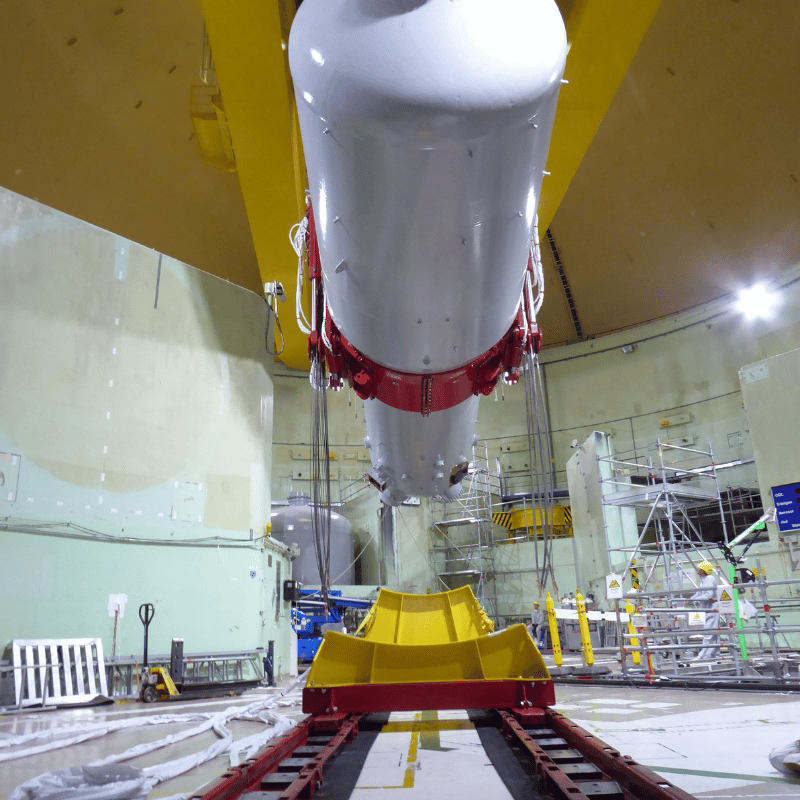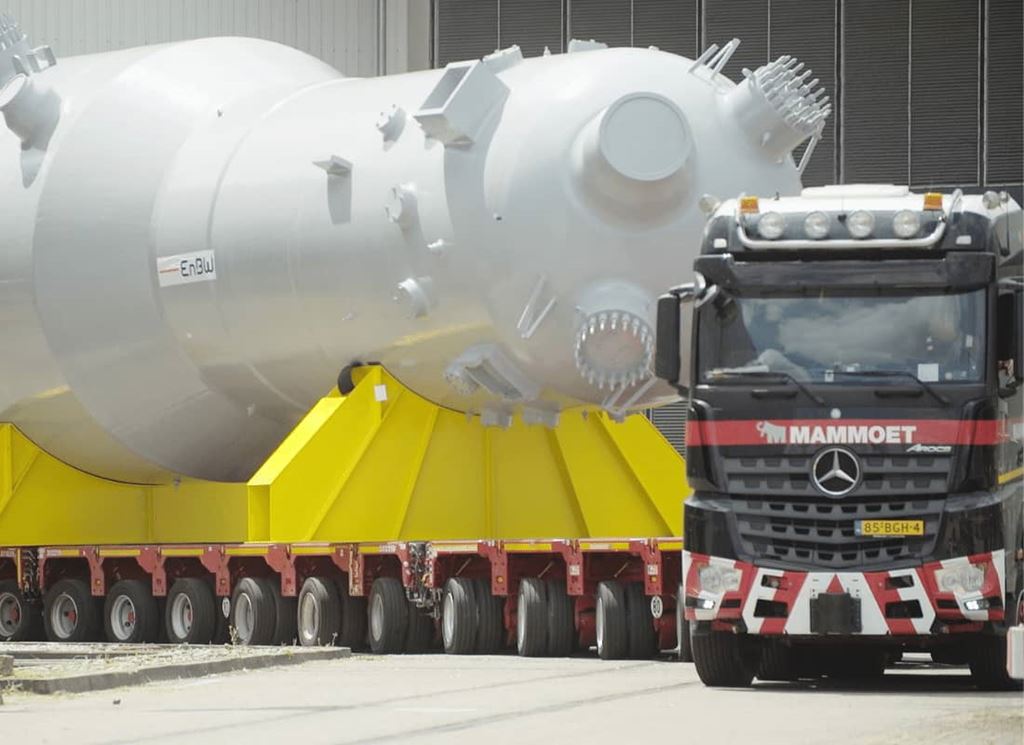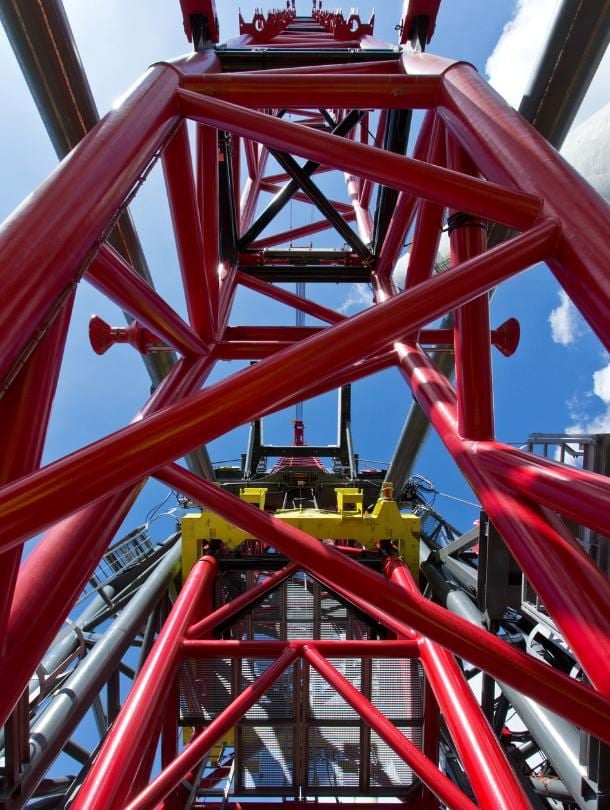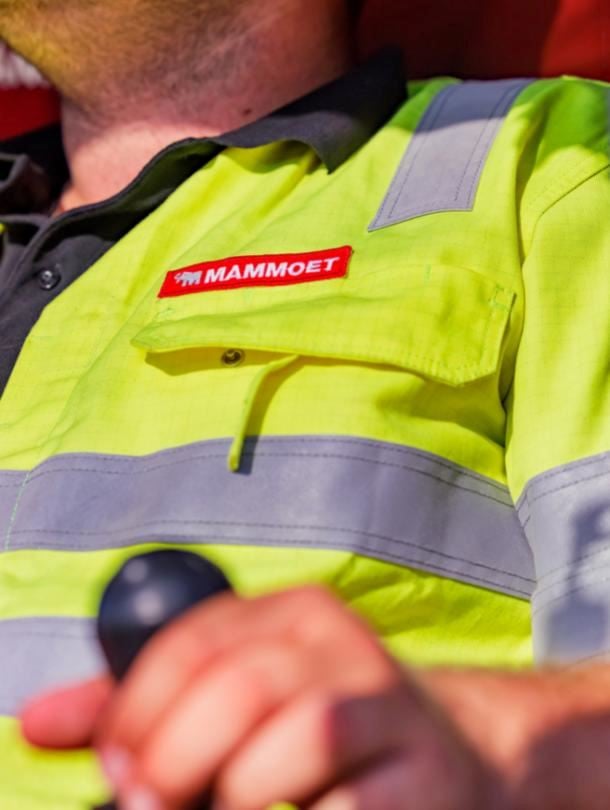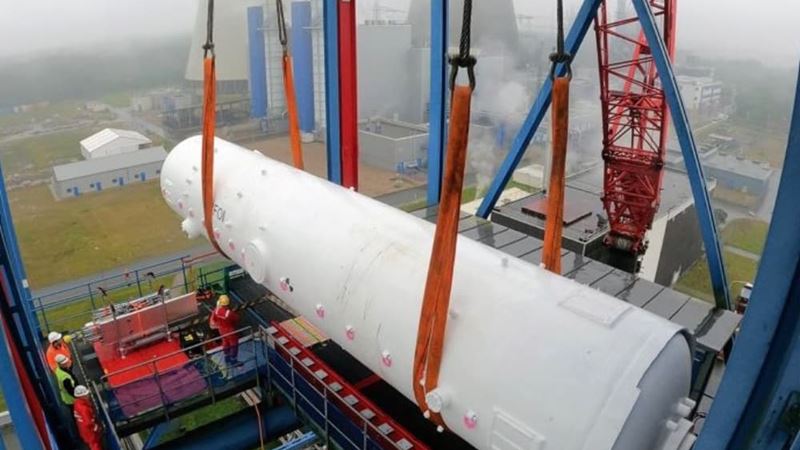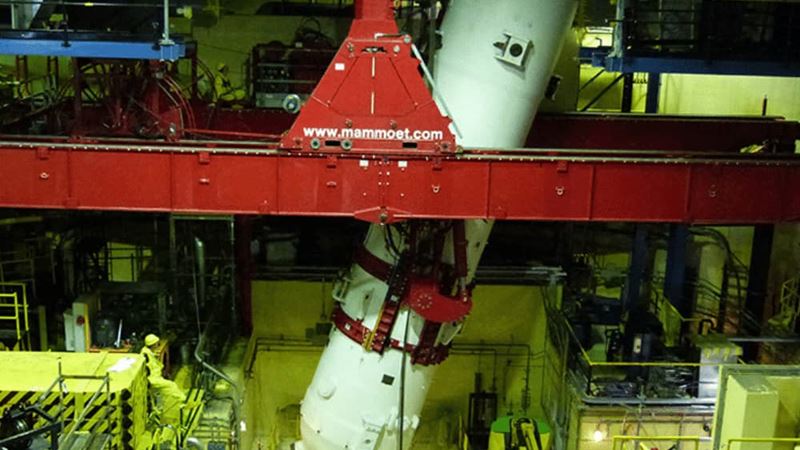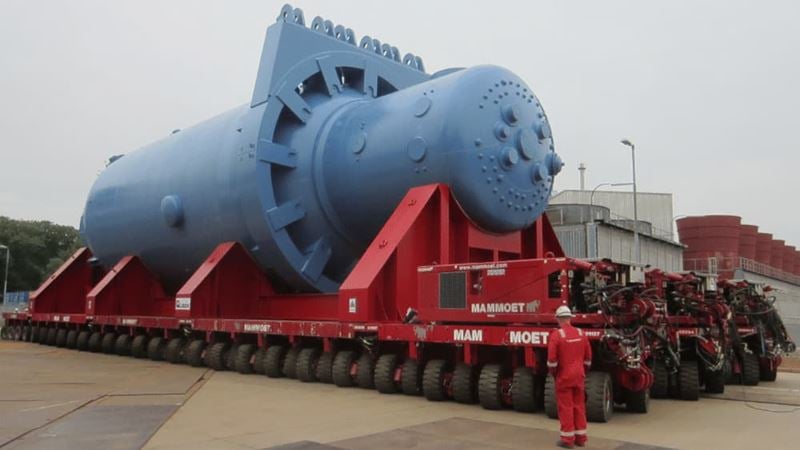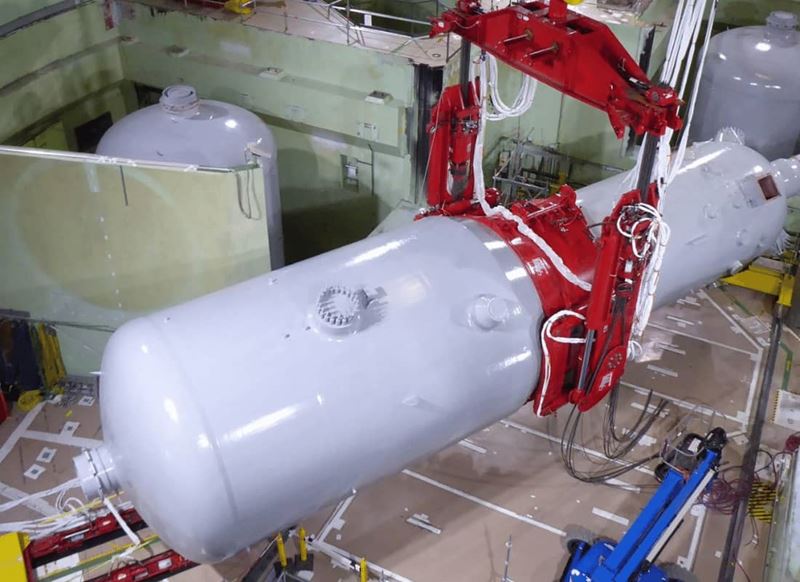
Sector:
Nuclear Power
Expertise:
Skidding
Heavy transport
Gantry lifting
Benefits:
Increased safety
Location:
Germany
Block I of the Neckarwestheim nuclear power plant (GKN I) was shut down in 2011 and has been undergoing decommissioning since 2017.
In the course of this, EnBW Kernkraft GmbH (EnKK) entrusted Mammoet to safely remove the three steam generators, each weighing around 290 tons, and the pressurizer, each weighing around 90 tons, from the plant building as complete components.
The main challenges of this project were the high-quality requirements of the client and the fulfillment of official regulations for working in nuclear facilities. Over a period of 24 months, all details were meticulously planned in close cooperation with the client during an elaborate planning phase.
Mammoet designed, engineered, and built its own DHS-500 steam generator handling system, to decommission GKN I’s steam generators safely and efficiently. In combination with the existing overhead crane and a hydraulic skidding system, a more time-consuming transport alternative could be avoided. To use this pioneering system, and in order to comply with the strict safety standards of the nuclear industry, Mammoet provided extensive documentation. With approved planning documents Mammoet could carry out a load and function test to prove the safe and efficient performance of the DHS-500.
After EnKK received full regulatory clearance to dismantle the major components, the DHS-500 was assembled outside the plant building and then moved inside. Once inside, Mammoet used the existing overhead crane and attached the DHS-500. The DHS-500 itself was customized to the conditions of the building and featured an adjustable belt that was designed to grip the cylindrical steam generators. Another ‘dry run’ test was necessary to ensure the DHS-500 could safely operate from the overhead crane.
The components were then removed one by one over a period of three weeks within the confined conditions of the building. For this purpose, each steam generator was fixed onto the DHS-500 and attached to the overhead crane. The steam generators were lifted in a controlled manner to the maximum height and tilted 90 degrees around their transverse axis.
During this operation, the DHS-500 could determine the exact center of gravity, which could previously only be narrowed to a more general area. The tilting and pivot point was adjusted to the center of gravity by using a hydraulic cylinder, providing the tilting operation with much greater stability and safety. The steam generators were further tilted into an almost horizontal position and lowered onto specially designed skidding saddles on the skidding system.
After being placed on the skidding system, the steam generators were safely skidded outside the plant building. The crane attached to the existing semi-portal lifting gantry then took over each steam generator one by one, lowering them, turning them 90 degrees, and placing them on a 17-line conventional trailer equipped for the transport with specially engineered transport saddles.
The steam generators were delivered to the lay-down area within the EnBW premises. The last to follow was the pressurizer. It was lifted out of its installation position by the overhead crane, placed on the skidding system, and transported to the lay-down area using the same procedure.
All images: EnBW Kernkraft GmbH
